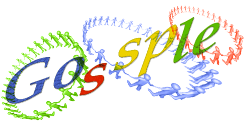Are we prepared to the new Internet generation: the Internet of people?
Objective: Investigating social behavior of workplaces and humans carrying smartphones
Advisors:
Dr. Aline Carneiro Viana, ASAP, INRIA, France
Prof. Adam Wolisz, TKN/TU-Berlin, Germany
Stephan Rein, TKN/TU-Berlin, Germany
Subject description
Emerging environments where a multitude of portable devices carried by people are making available communication and computing resources for anywhere and anytime connectivity, are nowadays a common scenario. Such pervasive scenario and the requirement for the formation of an Internet of People face a still higher demand in extreme environments when no networking infrastructure is available. Consider the problem of people retrieval or relief aid’s information dissemination in a disaster scenario, where landlines may be destroyed and cellular networks temporarily overwhelmed. A social-aware opportunistic communication among portable devices could be the only way for data exchange. The idea behind this kind of communication is to use any contact opportunity to send data and rely on social knowledge about users behavior to better infer the time and place to meet good contacts for message collection or delivery.
However, the user mobility imposes to devices (e.g. PDA, health monitoring sensors, vehicular communication devices) different communication challenges as forwarding paths may be unstable and devices reachability may be highly variable. Clearly, these issues change the network communication problem drastically.
Goals
The originality here is then (1) the investigation of the cyclic user mobility both in terms of geographic occupancy and social interactions and (2) the evaluation of the relative importance of mobile users and geographic regions in a considered workplace. For reaching these future objectives, the goal here is to develop a measurement testbed where connectivity and topographic patterns of mobile users will be tracked and latterly studied.
A scenario composed by users carrying smartphones will be exploited. This will allow measuring social interactions and tracking mobility of nodes in different regions of the considered workplace. The general idea is to develop a simple tacking application portable to different kind of smartphones to be installed by previously registered users, who are interested in participating. The specific tasks to be performed are specified hereafter.
Tasks
- To develop a simple tracking application for smartphones, allowing:
- collecting on-line social connectivity among users using Bluetooth communication,;
- periodically tracking the geographical location of smartphones by interacting with the Twitter social application.
- To develop the website where information about the application as well as its installer will be provided for end-users interested in participating.
- To perform 1 month of measurement and to investigate the collected traces in terms of contact and inter-contact patterns, social interaction among nodes, and topographical characteristics among nodes and regions.
The tracking application should be implemented in a programming language allowing maximizing the types of smartphones where it can be executed.
Requirements
A strong background on wireless communication, protocol design, and practical experimentation is requires. Candidates should be able to perform good critical analyses of obtained results and be creative in proposing solutions. International journals and conferences publications, as well as, technical reports are also expected.
Interested candidates should contact the advisors mentioned in the top of this page, by sending their CV and at least one recommendation letter.
Keywords
Real implementation, delay tolerant networks, social network, smartphones, Twitter, on-line social connectivity

